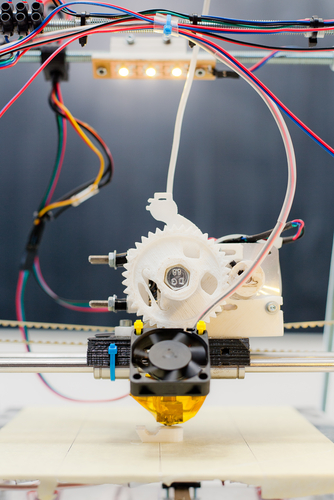
3D Printing & The Future of Manufacturing
Note: The following are a series of excerpts from a guest post by Axial’s Cody Boyte that appeared in this month’s ACG Magazine. Click here to read the full article.
Manufacturing is in the middle of a revolution. A slowly evolving revolution where additive manufacturing (3D printing) is rewriting the rules of traditional manufacturing processes. Product creation is moving from the global, mass produced model to a more local, individualized future. In many ways, the best of bespoke craftsmanship is starting to become available at the scale of the industrial revolution.
Manufacturing companies have always been extremely popular investments. They’re the single most common type of company brought to market on Axial, accounting for nearly 30% of the network’s deals each year. Investors love the predictability, the well understood operating theory, and the ability to innovate around increasingly sophisticated distribution methods. However, a few firms are starting to rethink their investment thesis as 3D printing makes entirely new business models possible.
Over the next couple of decades, traditional manufacturing will be transformed by 3D printing in four significant ways:
1) Mass Customization
Kegan Fisher, CEO of Sols, said that profitable 3D printing needs “three key components: minimal material use, high value products and a necessity for customization. Jewelry and medical devices are great examples.”
2) Ultra-precise Manufacturing
Parts of the Boeing 787 Dreamliner fuselage were 3D printed, allowing for a very thin, complex shape that would have been prohibitively expensive and difficult using traditional methods. Printed components produced in the necessary precision at a relatively affordable cost. As industrial printers evolve, new materials and technologies are being developed that allow for more complex shapes and better resolutions.
3)Niche and One-Off Products
The world of model trains, for example, has quickly adopted additive manufacturing because the market is so small that only a few products can be profitably mass manufactured. Train collectors often pride themselves on having unique trains or building backgrounds, but it used to be prohibitively expensive to replicate obscure objects except by hand. 3D printers have helped create an explosion of new concepts in train sets since one-off products are now possible and affordable.
4) Rapid Prototyping and Speed to Market
While one-off parts and niche products are interesting, the biggest change from consumer-grade printers will likely come from what Jordan Brandt, Technology Futurist at AutoDesk calls the “democratization of prototyping.” Imagine a world in which moving from an idea to a perfectly finished prototype takes only a few hours, not months.
